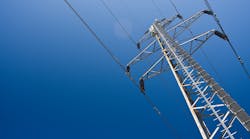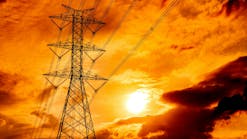How Power-Line Data Is Key to Better Emergency Preparedness, Response
At the time of writing this article, the United States is in the midst of an unprecedented confluence of natural disasters. Wildfires are ravaging communities on the western coast from California into Canada, while a busy hurricane season is bringing flooding and destruction along the southern and eastern coasts. Our first responders, including utility personnel, have been working nonstop to support emergency response and restore power to customers.
With that in mind — and operating on the sobering thesis that 2020 may not be a once-in-a-lifetime thing — we must ask how the utility sector can improve its resilience, with the climate and environment becoming increasingly unforgiving and the infrastructure continuing to age. While this requires an ecosystem of enhancements, one thing seems foundational — better power-line inspection data.
Asset knowledge is power
You can't fight a fire or stem a flood with data, but better asset knowledge and subsequent maintenance or upgrades during calmer times can help prepare utilities to better weather the disasters.
Modern methods of power-line inspection are often pitched in terms of risk mitigation but are not commonplace today. Utilities can collect vast quantities of granular data that can identify at-risk assets, whether the issue is aging, failing components, encroaching vegetation, or proximity to high-impact areas (for example, homes or schools). This data, of course, allows the utility to prioritize and complete maintenance or upgrade work to minimize the risk posed by disasters. It also helps utilities evolve an arbitrary time-based inspection cycle to a more data rich, risk-based inspection cycle, allocating resources to the highest-risk and impact portions of the system.
This data also has an application during emergency responses. With detailed vegetation data, utilities can identify high-risk areas where power lines are surrounded by vegetation. This data can help inform where Public Safety Power Shutoffs (PSPS) should apply. If the utility has LiDAR point cloud data, it has the data with sufficient granularity to better understand which assets are close to flammable objects or structures that pose an impact risk.
Essentially, detailed prior knowledge of all points of the grid offers intelligence about which parts of the network are most at risk to help plan and forecast the impacts of a given disaster. In the case of a hurricane, a utility has perhaps three or four days to prepare a response team. For tornadoes and wildfires, no staging time may be available at all. Having a deep grid data to hand ahead of time allows utilities to make the most of each vital moment.
Faster recovery
The end of a natural disaster typically marks the beginning of utility emergency repair. This is time sensitive, given that communities without power remain in danger and other recovery efforts are hampered when power isn't available. Hurricane Sandy knocked out power for more than eight million people in 21 states, leaving homes and businesses without power for days and weeks and even causing hospitals to evacuate patients.
A complication to this fast recovery is California's and other wildfire-risk states' PSPS, where the utility proactively de-energizes the system to ensure power-line equipment doesn't spark or spread wildfires. This changes the ecosystem of how utilities identify when and where equipment has been damaged. Those sensors require power to send signals to grid operators when abnormal conditions are experienced.
During a PSPS, a grid operator is blind to damages that may have occurred. Repowering the network once the crisis has passed could ignite a fire that the PSPS event was designed to avoid. A downed tree could have taken out a power line, resulting in power lines among dry vegetation, which can easily spark fires. Hence the need for meticulous post-PSPS inspections to ensure no such problems exist. This can involve various aircrafts and thousands of personnel. Depending on the PSPS event, this could mean thousands of power-line miles that need to be assessed to restore power to communities.
With current inspection methods, restoring customers as quickly as possible is labor intensive and costly. Modern inspection methods have the potential to significantly improve post-PSPS inspections. Today, it is possible to inspect lines with a high degree of accuracy using helicopters, fixed-wing aircrafts, and unmanned aerial vehicles (drones).
In the future, based on previously captured power-line inspection data, drones may be used to conduct partial or fully automated inspection, flagging problem areas for follow-up by ground crews, if necessary. This should enable more efficient use of resources, fewer risks to personnel, and faster power restoration without compromising safety or diligence.
Better protection for people, assets, utilities
It may not rank top of most observers' hierarchy of importance, but alongside risk to people and infrastructure, if a crisis is handled poorly, it could significantly damage the reputation of a utility and its leadership, which will be judged on the quality, speed, and output of decision-making.
Good decisions depend on a good understanding of the situation at hand, which, in turn, relies on good data. Not only can better data collected beforehand improve decision-making itself but it can also provide a more transparent foundation for decisions, allowing for a fairer assessment of leadership performance even if outcomes are controversial.
In short, better data collected during the everyday program of power-line inspection can be a critical tool in both preparing for and responding to emergencies. With no sign of the onslaught of crises relenting, power-line inspection data may well become a cornerstone of utility disaster response in the years to come.


